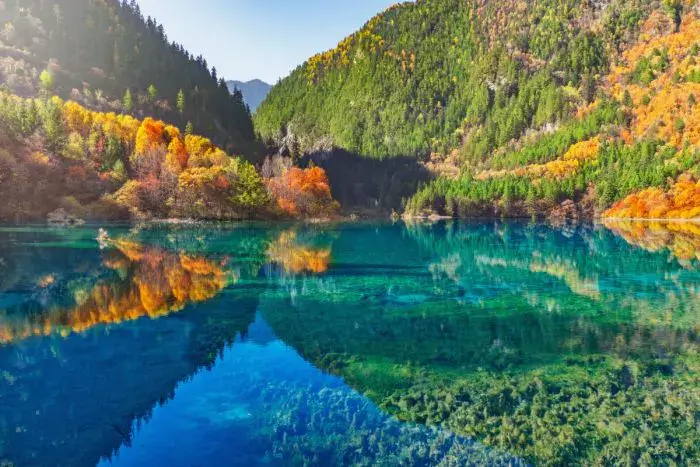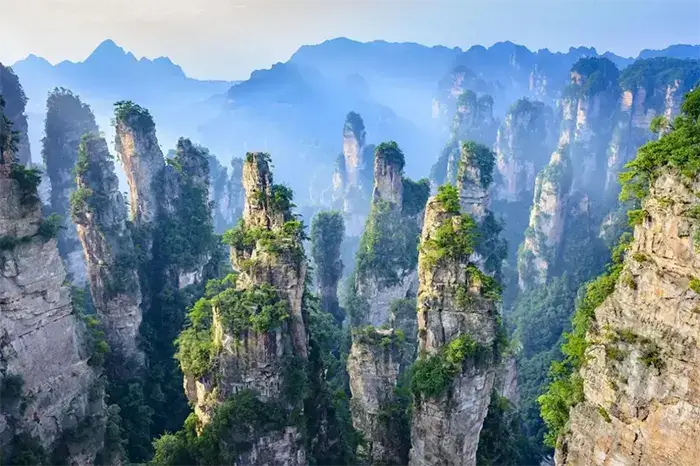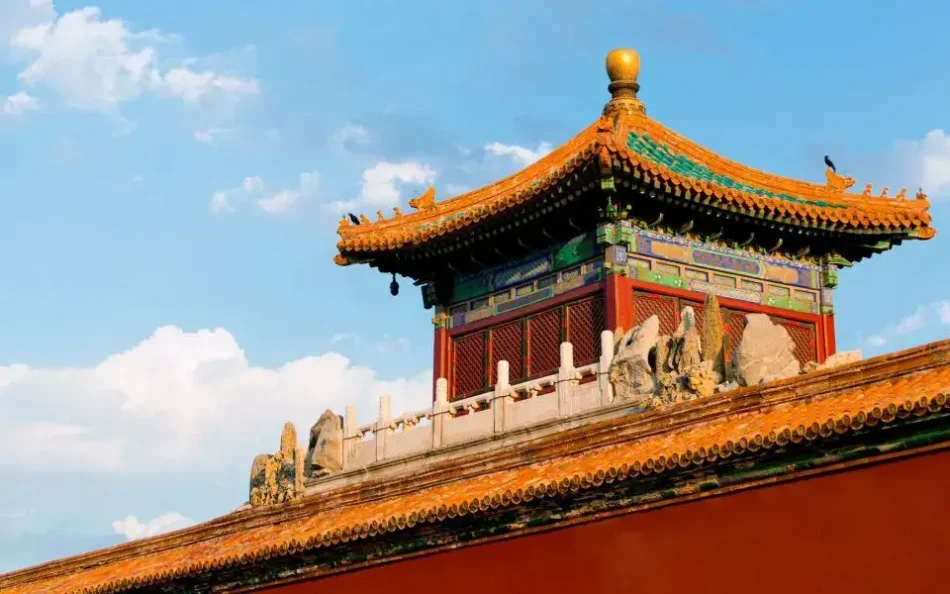China is a land of ancient civilization, rich traditions, and breathtaking landscapes. Every year, hundreds of millions of travelers, both domestic and international, explore its palaces, mountains, temples, and natural wonders.
Although rankings vary across reports, these ten destinations consistently top the lists as the most popular tourist attractions in China, representing the perfect blend of culture, history, and nature.
1. The Palace Museum (Forbidden City) — Beijing

The Forbidden City, or The Palace Museum, stands at the heart of Beijing as the world’s largest and best-preserved imperial palace complex. Built in the early 1400s, it served as the home of 24 emperors during the Ming and Qing dynasties.
Today, it houses over 1.8 million cultural relics and draws more than 15 million visitors annually. Its grand architecture, red walls, and golden roofs reflect the glory of imperial China and make it a must-visit landmark for history enthusiasts.
UNESCO World Heritage Site since 1987
Visitors review: “Massive and impressive, definitely worth it!
So much to see and so much history. We booked a guided tour and it made a huge difference. Our guide was knowledgeable and helped us understand the history behind everything. The place is HUGE, we walked a lot so wear good shoes! As foreigners, we were able to buy tickets by walking in, no issues. Absolutely a must-see if you’re in Beijing.
NOTE* You MUST bring your passport to buy tickets on the spot at the Meridian Gate ticket window and they also check it at the entrance.”
2. The Great Wall of China — Across Northern China

Spanning over 21,000 kilometers, the Great Wall of China is one of the world’s greatest engineering feats and the nation’s most iconic symbol. Originally built to defend against invasions, it now welcomes millions of tourists every year.
Popular sections such as Badaling, Mutianyu, and Jinshanling near Beijing offer panoramic views and restored fortifications ideal for hiking.
UNESCO World Heritage Site since 1987
Visitors review: “Absolutely unforgettable! We booked a day tour from Beijing with pick-up and drop-off included. Mutianyu is a bit less crowded than other sections which made the walk really enjoyable. We walk on our own and spent about 2.5 hours on the Wall, walking between the towers, taking in the views, and snapping tons of photos. It’s a workout, the stairs can be steep in some parts but the mountain views are incredible, totally worth it. Highly recommend comfy shoes and water!”
3. West Lake — Hangzhou, Zhejiang Province

West Lake, aka Xi Lake or Xihu, is a poetic masterpiece of landscape design, blending natural scenery with cultural monuments. Known for the “Ten Scenes of West Lake,” the area showcases pagodas, gardens, bridges, and willow-lined causeways.
Its free admission policy and convenient location in Hangzhou make it one of China’s most-visited scenic spots. The lake has inspired generations of poets, artists, and philosophers.
UNESCO Cultural Landscape Heritage Site since 2011
Visitors review: “Perfect Chinese tradition, incredible gardens and amazing temples, with many little tea houses, coffee shops and old restaurants, walking or biking around and spending time by the lake or staying in one of the beautiful hotels nearby are totally worth it.”
4. Mount Huangshan (Yellow Mountain) — Anhui Province

Renowned for its “Four Wonders”, peculiar pine trees, grotesque rocks, seas of clouds, and hot springs, Mount Huangshan is one of China’s most beloved mountains.
Its mystical scenery, often shrouded in mist, has influenced traditional Chinese painting and poetry for centuries. Visitors can enjoy hiking trails, sunrise views, and cable car rides to its granite peaks.
UNESCO World Natural & Cultural Heritage Site since 1990
Visitors review: “We had a local guide to organize our 2D/1N stay on top of Mt Huangshan. That’s where we learned from him that 2/3 of the year, Huangshan is raining and with much blessings, we had both of our days perfect clear blue skies. Also managed to stick around to see the sunset as well as sunrise the next day. It was unfortunate we could not stay more days to see more of Huangshan but what we saw blew us away.”
5. Jiuzhaigou Valley — Sichuan Province

Located in northern Sichuan, Jiuzhaigou Valley is a fairy-tale world of colorful lakes, cascading waterfalls, and dense forests. Its name means “Valley of Nine Villages,” reflecting its Tibetan heritage.
The park’s turquoise waters and multi-tiered waterfalls attract millions of eco-tourists each year. Despite past earthquake damage, it has been beautifully restored and continues to awe visitors.
UNESCO World Natural Heritage Site since 1992
Visitors review: “This place is absolutely beautiful. It’s all natural and the water is amazing. We were awed by the beautiful water, waterfalls, lakes and snow cap mountains. Do expect lots of walking but it was worth it.
Getting there is a little tricky as you will need to book your train tickets in advance. Most people go there the night before and start their visit early in the morning.
I’d definitely recommend this place if time to spare while in Chengdu.”
6. Zhangjiajie National Forest Park — Hunan Province

Home to the dramatic quartz-sandstone pillars that inspired the floating mountains in Avatar, Zhangjiajie is China’s first national forest park and a geological wonderland.
Visitors can experience the thrilling Glass Bridge, ride scenic elevators up the cliffs, or hike among surreal rock formations. The park’s otherworldly beauty makes it a favorite for adventure seekers and photographers alike.
Part of the Wulingyuan Scenic Area, UNESCO Site since 1992
Visitors review: “Zhangjiajie is like stepping into a fantasy world, towering sandstone pillars, misty valleys, and lush forests straight out of Avatar! The infrastructure is flawless (Elevators, scenic trails), making it easy to enjoy nature without roughing it. A must-visit if you love epic landscapes with comfort. Worth every second! Such a infrastructure created for travelers convenience.”
7. Mount Tai (Taishan) — Shandong Province

Revered as the “Chief of the Five Sacred Mountains of China”, Mount Tai has been a site of imperial worship and pilgrimage for over 3,000 years. Ancient stone inscriptions, temples, and stairways mark the path to its summit.
A climb up Mount Tai is both a spiritual journey and a cultural exploration. Emperors once came here to pay tribute to heaven and earth, symbolizing national unity and divine blessing.
UNESCO World Natural & Cultural Heritage Site since 1987
Visitors review: “Mount Tai (Taishan) is the king of the most important 5 mountains in China. Emperor Qing was the first emperor of China & he prayed there for well being of his country. Follow them, some 12 emperors did that.
First part of the climb can be either by cable car for 100RMB or walk the 6690 stairs (normally 2-2.5 hours). I took 1hr 20mins. Thereafter to the peak of 1545m, 1500 more stairs waiting for you. Only walk up. Mount Tai is not very high but a very significant one.”
8. Gulangyu Island — Xiamen, Fujian Province

Known for its European-style villas, tranquil beaches, and musical culture, Gulangyu Island offers a romantic escape from mainland bustle.
Once an international settlement, the island features a blend of Chinese and Western architecture, earning it the nickname “The Island of Music”. Motor vehicles are banned, allowing visitors to explore on foot through artistic streets filled with cafes and galleries.
UNESCO World Cultural Heritage Site since 2017
Visitors review: “Tropical island with sand beaches, numerous private gardens and old buildings, a famous museum for piano. A ferry ride is needed to get to the island. Too many visitors even in winter time.”
9. Guilin and the Li River — Guangxi Zhuang Autonomous Region

“Guilin’s landscape is the best under heaven”, this ancient saying perfectly captures the area’s charm. The Li River cruise from Guilin to Yangshuo showcases limestone peaks, bamboo groves, and serene villages mirrored in crystal-clear waters.
The karst formations here are globally recognized for their striking shapes and poetic beauty, making Guilin one of China’s top nature destinations.
Part of the South China Karst UNESCO World Heritage Site since 2007
Visitors review: “What an absolutely stunning place to enjoy a river cruise, our group were on the bamboo rafts enjoying a short journey and boy did we all wish we were on the river for longer. Everywhere you looked was beautiful mountain scenery, locals going about their business or animals grazing at the waters edge, it was so relaxing, we had a wonderful dry and sunny day for it so the experience was perfect. This is a must see part of the area if you are visiting, you won’t regret it as you need to see this with your own eyes.”
10. Potala Palace — Lhasa, Tibet Autonomous Region

At 3,700 meters above sea level, the Potala Palace stands as the world’s highest ancient palace complex and a symbol of Tibetan Buddhism.
Originally built in the 7th century and expanded in the 17th century, it served as the winter residence of the Dalai Lamas. The palace contains over 1,000 rooms filled with ancient murals, scriptures, and precious artifacts.
Its striking white and red walls against the Himalayan backdrop make it a spiritual and architectural marvel.
UNESCO World Cultural Heritage Site since 1994
Visitors review: “Mindblowing!! Words can’t express how amazing, beautiful and incredible this place is. It’s been on my bucket list forever and I’m so glad i got to experience this. The beauty and history explained by our guide added to the aura that surrounds this place. Speechless!”








